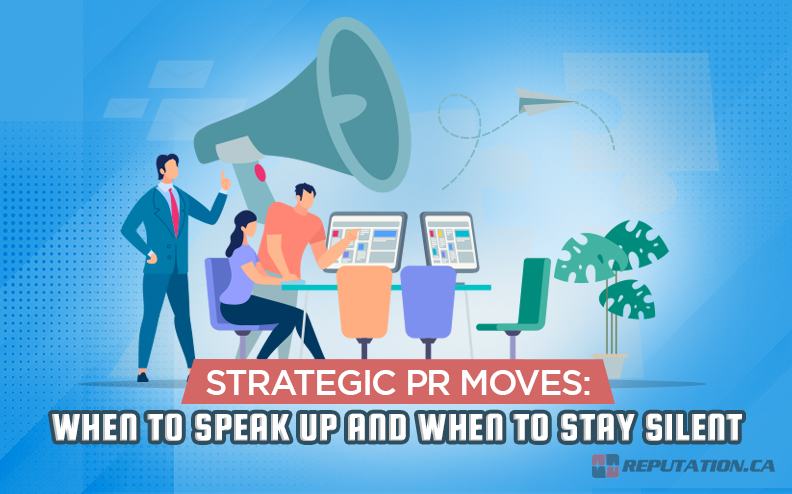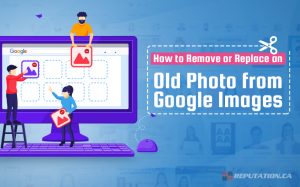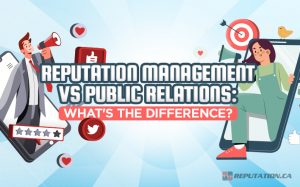Ever feel like you’re navigating a PR minefield, one wrong step away from detonating your company’s reputation? Welcome to the world of strategic PR. It’s not just about spin and damage control; it’s a chess game.
In this deep dive, we’ll be your guide through the foggy terrain of public relations strategy. From understanding when silence is golden to recognizing that perfect moment to break it – every move matters in shaping how the world sees you.
You might think being loud gets attention, but what if saying nothing could make more noise? And when should you raise your voice again?
Ready for some real talk on these burning questions? Buckle up as we embark on this enlightening journey together!
What is Strategic PR?
Strategic Public Relations, or Strategic PR for short, isn’t just about putting out fires when things go wrong. It’s a calculated approach to managing and enhancing an organization’s reputation. With the rise of social media and real-time communication, strategic PR has become more crucial than ever.
The focus here isn’t solely on crisis management but extends to fostering positive relationships with key stakeholders – be it customers, investors, or employees. This helps create a resilient image that can weather any storm.
In essence, strategic PR works like your favorite superhero—always alert and ready for action. But instead of fighting off villains from another planet, its mission is shaping public perception through well-planned initiatives backed by insightful research.
A successful strategic PR campaign starts with clearly defined objectives – think launching a rocket into space. These goals could range from improving brand recognition to mitigating negative press coverage.
It’s important not only to set these targets but also to align them with your broader business strategy.

Your key messages are the fuel propelling your campaign forward; they’re what you want people to remember about you long after their interaction ends.
Effective messaging doesn’t mean parroting corporate jargon but crafting compelling narratives that resonate deeply with audiences.
For instance, “Our team at Reputation cares about helping clients manage their online presence effectively.”
Identifying who needs to be reached (target audience) and the optimal method of communication (channels) is essential. Remember, your audience isn’t everyone with an internet connection; it’s more specific, and that’s why understanding their preferences and behavior can help in selecting the right channels.
So, just like a well-planned space mission, strategic PR is all about keeping an eye on progress.
What is Strategic Silence?
Strategic silence can be a powerful tool in the public relations toolbox. It’s not about refusing to comment or ignoring an issue but rather making a conscious decision to withhold communication for strategic reasons.
The concept might seem counterintuitive. After all, we’re often told that open and transparent communication is key. But sometimes, staying silent can serve your organization better than any statement could. For instance, when dealing with complex legal matters or sensitive internal issues, premature commentary could escalate problems instead of resolving them.
In essence, strategic silence gives you control over the narrative, as this Forbes article explains. By choosing not to respond immediately, you get time to assess situations more accurately and craft messages carefully.

“Silence isn’t empty; it’s full of answers.”, as they say. In PR terms, the absence of immediate reaction doesn’t mean indifference—it signifies calculated restraint.
This idea extends even further when handling online reviews and feedback—especially negative ones—that can potentially harm your reputation if you respond poorly.
No doubt managing strategic silence needs finesse—it’s like walking on a tightrope. It’s not about completely shutting down communication but knowing when to pause and when to proceed.
Strategic silence shouldn’t be confused with avoidance or neglect—it is an active strategy, requiring as much thought—if not more—than other forms of PR engagement. Harvard Business Review explores this idea further in one of its insightful pieces on strategic leadership and decision-making.
The Value of Saying Nothing
Sometimes, the most effective communication is to remain silent. But why? Let’s break it down.
Strategic silence is a potent tool in PR, often used to avoid escalating issues further. It allows an organization to control the narrative and prevent misunderstandings from spiraling out of hand. The Journal of Business Ethics gives us an example where silence played a key role in managing reputational risk during times of crisis.
The choice not to speak lets you steer the conversation when it matters most. Remember when Apple didn’t comment on iPhone 4’s “Antennagate”? They waited for facts before speaking up, which helped them maintain their image as a trusted brand that values quality over quick fixes or knee-jerk reactions.

Patiently waiting for the right moment also forms part of strategic silence. When handled correctly, timing your communication can make all the difference between getting heard and getting lost in the noise. “Timing,” says author Daniel Pink, “is everything.”.
- Making use of silence can de-escalate situations by preventing miscommunication or hasty responses that could potentially harm your reputation.
- In some cases, staying silent provides room for others involved in an issue to come forward with information beneficial to your side.
- Silence offers time; time is needed for thoughtful reflection and carefully considered action instead of going off half-cocked.
In PR, understanding when to remain silent is as critical as knowing what and how to communicate. The ability to harness the power of silence can be a game-changer in shaping public perception and maintaining control over your narrative. At times, it may be tactically prudent to stay mum instead of speaking out.
Navigating the complex waters of public relations requires a keen understanding of when to voice your thoughts and when to hold back. Strategic silence, an often overlooked PR tactic, can be a powerful tool in your arsenal.
To use this strategy effectively, you need clear guidelines. Let’s break down some key steps:
- Identify potential triggers: Anticipate situations that might provoke negative reactions or controversy. Prepare for these scenarios in advance so you’re not caught off guard.
- Evaluate the situation: When faced with a crisis or backlash, take time to fully understand what’s happening before deciding whether to respond or stay silent.
- Determine impact on stakeholders: If silence could harm your customers or partners more than speaking up would, it may not be the best choice. Consider their perspective carefully.
Silence doesn’t mean being passive, though; rather, it’s about active monitoring and decision-making behind the scenes. Use social media analytics tools, like Hootsuite, to track sentiment around hot topics related to your brand and decide if staying quiet is truly beneficial at any given moment.

A well-timed pause allows room for introspection and better judgment – two crucial ingredients for successful strategic silence implementation.
Firstly, analyze how serious the issue is – does it warrant immediate attention? If yes, but without enough facts available yet, pause. It gives space for clearer insights into how best to handle the situation once all data surfaces.
Secondly, check who is most affected by this scenario – stakeholders’ sentiments play a big role in your response strategy.
It’s essential to remember that strategic silence is not about avoiding accountability or responsibility. It’s a calculated move, allowing you time to formulate the most effective response and ensure your message aligns with your organization’s values and goals.
Instead of jumping to quick remarks, take a breather. This approach helps dodge the bullet of unnecessary drama and gives organizations time to craft thoughtful responses.
Knowing When to Break Silence
The art of breaking silence can be likened to finding the right key for a lock. It’s all about timing and public perception.
There are signs that tell you when it’s time to break your strategic silence. Let’s explore some indicators:
- The crisis is under control: If the initial crisis or issue has been addressed internally, it might be an appropriate time to speak up. Remember, this doesn’t mean things have completely cooled down but rather that they’re manageable.
- Narrative shifts in your favor: Pay attention if media coverage starts becoming more balanced or even swings towards positivity. This could signal a good moment to rejoin the conversation.
- Inevitable exposure: If remaining silent would lead to bigger issues (like legal troubles), then it’s best not just sit tight – talk.
Your decision on when and how should reflect sound judgment while also taking into account the potential consequences of continued silence versus speaking out again.

You’ve decided now is the time – great. But remember, how you communicate matters as much as what you say. The tone must align with your brand identity and values; after all, authenticity isn’t negotiable—it’s mandatory in today’s PR landscape.
A useful tool here is online reputation management services like us at Reputation. We help monitor online sentiment about your company, which helps inform whether people are ready for dialogue with you yet—or still need more quiet time.
Remember, breaking silence is not about simply returning to “business as usual.” When making a decision to communicate, it’s essential to plan and execute cautiously. So when you do decide to speak up again, make sure it counts.
Ethical Guidance on Strategic Silence
Strategic silence isn’t about turning a blind eye or running from the problem. Maintaining a poker face can be just as essential to success as taking action. But it must always adhere to ethical guidelines.
The Public Relations Society of America (PRSA) emphasizes honesty and integrity in all communication, including strategic silence. Their guidelines help organizations navigate this complex landscape.
A crucial factor is considering stakeholders’ rights for accurate information against potential harm caused by disclosure. For instance, revealing details during legal disputes might lead to unfair public judgment without full context.
This delicate balancing act requires keen judgment and respect for stakeholder interests while protecting organizational reputation.
Navigating these situations can pose significant ethical dilemmas because silence can easily be misinterpreted as guilt or indifference.
To mitigate this risk, it’s critical that companies provide an explanation when they break their silence – clarifying why they remained quiet initially but chose now to speak up.
This practice maintains transparency with audiences and builds trust over time, even through periods of no comment.

Remember: the goal is not just damage control but long-term relationship building with stakeholders, which benefits both parties.
The key here is consistent adherence to truthfulness, whether you’re speaking out loud or staying silent – never misleading anyone intentionally with false impressions due to only having half the story told at any point in time.
At the conclusion of it all, remaining silent should never be used as a justification for unethical actions. Rather, it’s a tool to manage communication ethically and effectively when circumstances demand so.
It’s like poker, where knowing when to hold “em and fold “them is crucial. But unlike poker, in PR, there are no bluffs – just the art of managing truth effectively.
Measuring the Impact of Your Strategic PR Efforts
Gauging the success of your strategic PR moves isn’t as tough as it sounds. You just need to focus on a few key metrics and evaluation techniques.
Your first step should be checking out how far your messages are reaching. But remember, reach is more than just numbers. Look at who you’re reaching out to – are they influencers? Potential customers?
The next piece of the puzzle is engagement: Are people liking, sharing, or commenting on your content? If not, you may need to rethink what you’re saying – or when you’re choosing silence over speech.
A critical part of measuring impact involves sentiment analysis; this tells us whether public opinion toward our brand is positive, negative, or neutral following our strategic communication (or lack thereof).
At Reputation, for example, we use sophisticated AI tools that can help analyze sentiments with precision.

Website traffic stats offer valuable insight into the effectiveness of PR strategies. Did a timely public announcement result in an influx of visitors?
Funny enough, silence can also lead to increased curiosity about your brand and consequently drive up web traffic.
To get an even clearer picture, we recommend tracking changes in SEO ranking. An effective PR campaign could significantly improve search visibility and keyword rankings.
Ultimately, PR strategies should translate into more sales. Look for upticks in conversion rates or new customer acquisition after a strategic communication move.
Subtract the outlay for your PR strategy from the revenue it brought in, then divide it by that same expenditure to determine its return. The formula is simple: subtract the cost of your PR campaign from the sales it generated, then divide by that same cost.
It might feel like a big challenge but don’t sweat it. You’re not in this alone. Our dedicated team here at Reputation is ready to help. Get in touch today for a free consultation!












